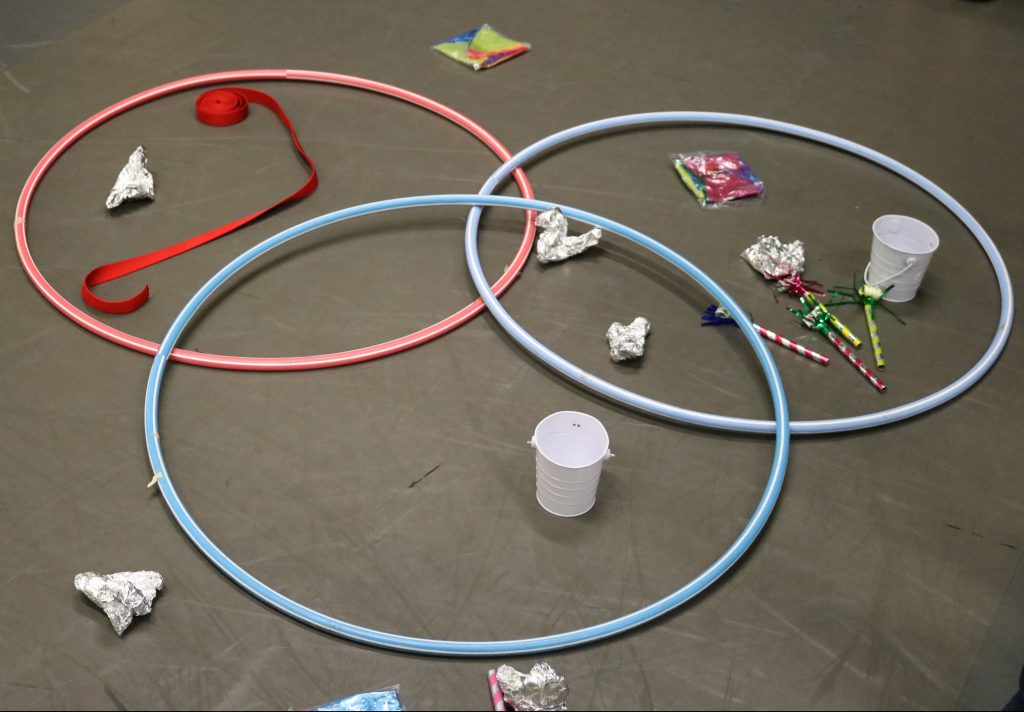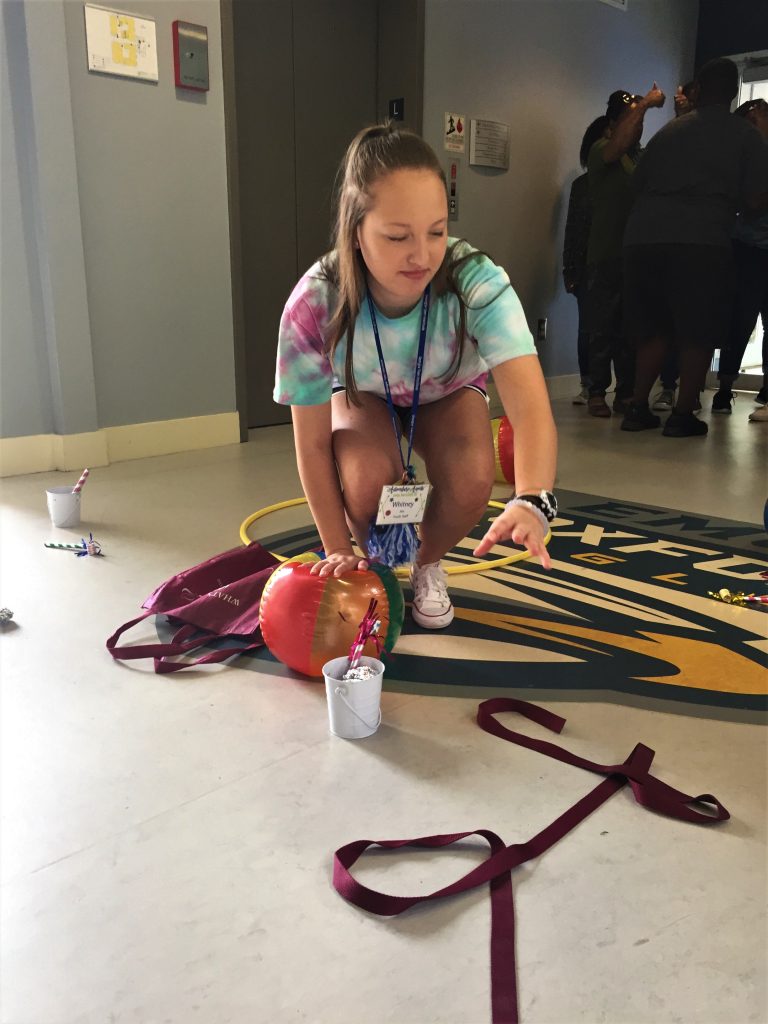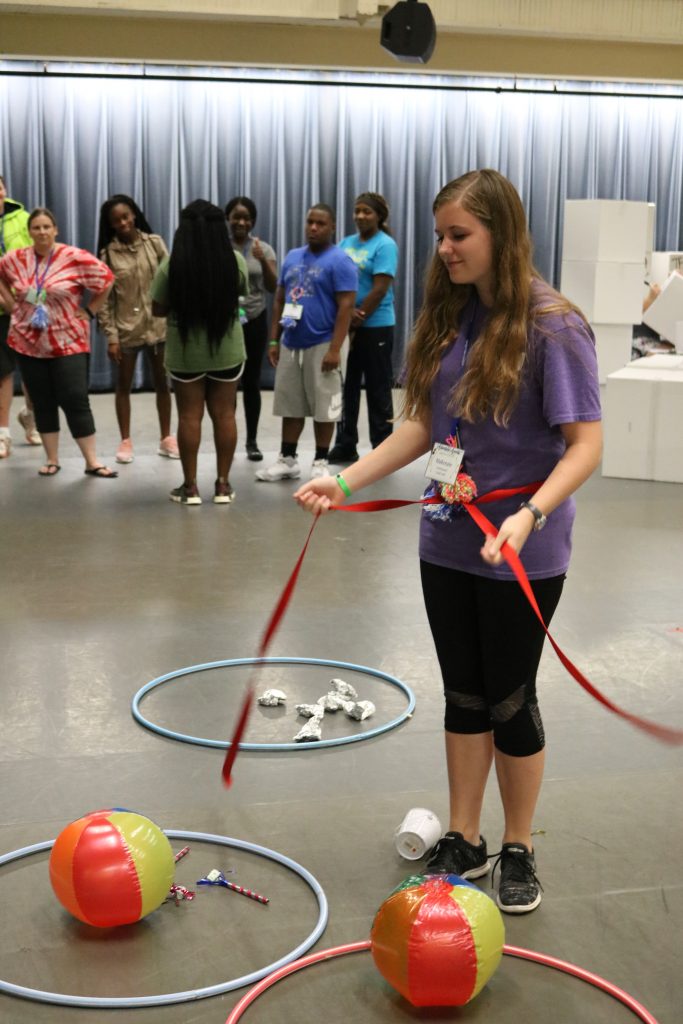The Big Secret
Do you have a group that could benefit from communicating with intention, using critical thinking skills and strategic planning as a team? If so, look no further than The Big Secret for the ideal team building activity. With a large focus on intense interaction and cooperation, this activity also encourages the building of trust among group members.

Time Needed: 20 minutes
Group Size: 5-10 people
Materials: Frisbees, hula hoops, balls, bats, pool noodles, ropes, cones, etc.
Directions: First, please ask for two volunteers to be separated from the rest of the group. Those volunteers should leave the room so they can’t hear what’s going on inside the room. Tell them you will be out to give them instructions shortly.
While those volunteers are outside, scatter various items (frisbees, hula hoops, balls, bats, pool noodles, ropes, cones, etc.) around the room in a designated activity space. As you are scattering the items, tell the rest of the group that they have to think of three SPECIFIC tasks in a specific order for one of the volunteers outside to complete. As these tasks are being decided, intervene as necessary to ensure tasks are safe and not embarrassing for the volunteer. Here are a few examples of specific tasks:
- Pick up the blue hula hoop and hula hoop three times around your waist.
- Hold the two green cones up to your ears.
- Jump up and down four times while holding the yellow frisbee.

Once the group has determined the three activities and their order, tell them that they have one rule to follow when the volunteers return: the group may NOT talk or touch anyone or anything.
Next, go outside to the volunteers and explain that one of them will have to be blindfolded (or close his/her eyes) for the remainder of the activity. The other volunteer will not be able to move for the remainder of the activity once they are back in the room. This is the only information you should share with these volunteers.
Then, start with the volunteer who will not be able to move. Walk this person into the activity space backwards (so that he/she cannot see the items that have been scattered). Position this person toward the edge of this space, and quietly (so the rest of the group doesn’t hear) remind them that they may not move any part of their body.
Finally, walk the blindfolded volunteer in and place him/her in the center of the activity space. Tell the larger group they can begin.
 Helpful Hints
Helpful Hints
- This is a high-level team building activity, both for the group and facilitator. It is helpful to consider the group’s dynamics, level of maturity and trust ahead of time. A discussion may even be necessary with the group to set expectations around trust, respect and safety. The facilitator needs to be very observant to how the two volunteers are responding during the activity (remember, they are in vulnerable positions and are isolated in their tasks).
- The blindfolded person should not know they are supposed to complete the three tasks (this adds to the difficulty of the activity).
- With most groups, the two volunteers who were separated won’t talk because no one else is talking, so they end up limiting themselves, which can be revisited during the debrief.
- If, after five minutes, your group has made no progress, ask everyone to pause and have the two volunteers say their one rule each out loud. As the facilitator, share with the volunteers that the rest of the group’s rules are that they cannot talk or touch anything. This may help them realize some strategies.
- Be very attentive to safety of the person who has no sight and remind them that they are safe if the group takes a while to catch on.
Debrief Questions:
- To the group: How did it feel to determine the tasks to be completed and then learn you cannot talk and the volunteer is blindfolded?
- To each of the volunteers: What was your experience like?
- How was this frustrating, and how did you overcome that?
- How does the ability to ask questions help us get things done?
- How did you figure out the best way to get the tasks completed?
- What different roles did the members of the group play in your success?
